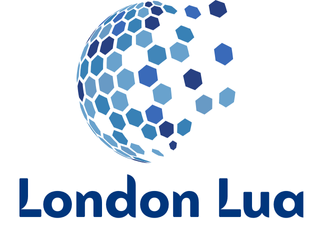Achieving work-life balance can feel overwhelming, yet your smartphone is a powerful ally in this journey. With the right strategies and apps, you can streamline tasks, set boundaries, and enhance productivity—all from your pocket. Discover how to transform your device into a seamless management tool that nurtures both your professional and personal life. Embrace these practical tips to reclaim your time and enjoy a more fulfilling daily routine.
Understanding Work-Life Balance
Work-life balance is a concept that involves prioritizing between work and personal life. It is essential to understand that achieving this balance is not about equally dividing time between work and leisure but about finding a harmonious integration of both. The importance of balance lies in its ability to reduce stress and prevent burnout, which is crucial in today's fast-paced world.
In parallel : Fortify Your Smartphone: Essential Tips to Enhance Security Settings for Safe Online Shopping
Achieving a good work-life balance is vital for maintaining mental health. When individuals can effectively balance their professional and personal responsibilities, they experience less stress and anxiety. This balance also allows for greater focus and concentration, enhancing overall productivity.
The benefits of balance extend beyond personal well-being. For employers, encouraging employees to maintain a work-life balance can lead to improved job satisfaction and increased retention rates. Employees who feel valued and supported are more likely to be motivated and engaged in their work.
Also to read : Unlocking Convenience: Mastering Your Smartphone to Control Smart Lock Systems
In summary, understanding and achieving work-life balance is crucial for both mental health and productivity. It fosters a healthier, more sustainable work environment and contributes to a more fulfilling personal life. By prioritizing balance, individuals can lead more harmonious and productive lives.
Essential Smartphone Features for Balance
In today's digital age, smartphones are indispensable tools for achieving work-life balance. They come equipped with a variety of smartphone features that can significantly aid in time management and productivity. Built-in applications like calendars and reminders are fundamental for organizing tasks and scheduling commitments efficiently.
Utilizing Productivity Tools
Smartphones offer a plethora of productivity tools designed to streamline daily routines. For instance, using a digital calendar can help you visualize your day, week, or month, allowing you to allocate time effectively for work and leisure. Reminders can act as digital nudges, ensuring you don't overlook important tasks or appointments. By setting these tools to notify you at strategic times, you can maintain a steady workflow without becoming overwhelmed.
Customizing Settings for Optimal Time Management
Customizing your smartphone's settings can further enhance your ability to manage time. Features like do not disturb mode can be activated during focused work sessions to minimize distractions. Additionally, setting app usage limits can prevent excessive time spent on non-productive activities, helping you maintain a balance between work and personal life. By tailoring these settings to your lifestyle, you can create an environment conducive to achieving a harmonious work-life balance.
Recommended Apps for Work-Life Balance
In the quest for a harmonious work-life balance, leveraging technology can be a game-changer. Productivity apps, time management apps, and wellness apps are pivotal in this journey, offering tailored solutions for diverse needs.
Task Management Apps
Task management apps are essential for organizing and prioritizing tasks efficiently. Apps like Todoist and Trello allow users to break down tasks into manageable steps, set deadlines, and track progress. They offer features such as collaborative boards, task assignments, and progress tracking, which can enhance productivity and ensure that important tasks are completed on time. These apps are particularly beneficial for individuals juggling multiple responsibilities, providing a clear overview of what needs to be done.
Calendar Apps
Effective calendar apps are vital for scheduling commitments and managing time. Apps like Google Calendar and Microsoft Outlook offer features such as event reminders, shared calendars, and time zone support. These apps help users visualize their schedules, allocate time for work and leisure, and avoid overbooking. By integrating with other productivity tools, they ensure a seamless workflow and help maintain a balanced lifestyle.
Wellness Tracking Apps
Wellness tracking apps like MyFitnessPal and Headspace focus on personal health and well-being. They offer features such as activity tracking, guided meditation, and nutrition logging. These apps encourage users to incorporate wellness practices into their daily routines, promoting a healthier lifestyle. By prioritizing wellness, individuals can enhance their mental and physical health, contributing to a more balanced life.
Techniques for Prioritizing Tasks
In the pursuit of effective task prioritization, adopting the right strategies can significantly enhance productivity and time management. One of the most effective productivity strategies is the Eisenhower Box, which helps categorize tasks based on urgency and importance. By distinguishing between tasks that are urgent and those that are important, individuals can focus on high-priority activities and prevent procrastination.
Introduction to Time Blocking
Time blocking is a powerful method for managing your day by allocating specific time slots to different activities. This technique not only helps in organizing tasks but also ensures dedicated focus on each task, reducing the likelihood of distractions. By setting aside blocks of time for specific tasks, you can maintain a structured schedule that accommodates both work and personal obligations.
Creating a Daily Productivity Plan
To implement these strategies effectively, creating a daily productivity plan is essential. Start by listing all the tasks you need to accomplish, and then prioritize them using the Eisenhower Box. Allocate time blocks for each task, ensuring a balance between work-related activities and personal commitments. By adhering to this plan, you can enhance your productivity and achieve a more balanced lifestyle.
Minimizing Distractions on Your Smartphone
In our hyper-connected world, minimizing distractions on your smartphone is crucial for maintaining focus and productivity. With constant notifications and the allure of endless scrolling, it's easy to get sidetracked. Fortunately, there are effective focus techniques and phone management strategies to help you stay on track.
Tips for Reducing Notifications
Start by customizing your notification settings. Disable non-essential alerts to reduce interruptions. Group notifications to receive them at specific times rather than sporadically throughout the day. This simple adjustment can significantly enhance your concentration.
Techniques for Maintaining Focus
Utilize focus techniques like the Pomodoro Technique, which involves working in short bursts with breaks in between. This method can be particularly effective when combined with apps that block distracting sites during work sessions. Additionally, consider using the do not disturb mode during critical tasks to maintain an uninterrupted workflow.
Tools to Limit Screen Time
There are numerous tools available to help manage and limit screen time. Apps like Forest and StayFocusd encourage productivity by restricting access to distracting apps or websites. Setting daily limits on app usage can also prevent excessive screen time, allowing for a better balance between work and personal life.
Creating a Work-Life Balance Routine
Establishing a daily routine is crucial for achieving effective work-life integration. A well-structured routine helps manage time efficiently, reducing stress and enhancing productivity. By setting clear boundaries between work and personal time, individuals can ensure they dedicate appropriate attention to both areas.
Key Elements of a Balanced Work-Life Schedule
To create a balanced work-life schedule, focus on incorporating key elements that promote harmony. Start by identifying your peak productivity times and schedule demanding tasks during these periods. Allocate specific times for work, breaks, and personal activities, ensuring a healthy mix of responsibilities and leisure. Incorporating regular breaks can prevent burnout and maintain energy levels throughout the day.
Adapting Routines to Individual Needs and Preferences
It's essential to tailor routines to fit personal preferences and lifestyle. Consider factors such as family commitments, personal goals, and energy levels when designing your schedule. Flexibility is key; adjust your routine as needed to accommodate changes in priorities or unforeseen events. By creating a routine that aligns with your unique needs, you can achieve a more sustainable work-life balance.
Case Studies of Successful Implementation
Exploring case studies of individuals who have successfully achieved work-life balance can provide valuable insights. These success stories showcase diverse strategies that have proven effective in real-world scenarios.
One compelling real-life example is Sarah, a project manager who restructured her daily routine to prioritize both family and work commitments. By utilizing time-blocking and task management apps, she was able to allocate specific hours for high-priority tasks while reserving evenings for family time. This method not only enhanced her productivity but also reduced stress.
Another success story involves Tom, a software developer who embraced remote work flexibility. By setting clear boundaries between his work and personal life, Tom ensured that he logged off at a specific time daily, dedicating post-work hours to hobbies and relaxation. This approach improved his job satisfaction and overall well-being.
Lessons learned from these implementations emphasize the importance of personalized strategies. Each individual tailored their approach based on personal needs and professional demands. Key takeaways include the significance of setting boundaries, leveraging technology for time management, and maintaining flexibility to adapt to changing circumstances. These examples highlight that achieving work-life balance is a dynamic process, requiring continuous adjustment and commitment.
Staying Motivated and Accountable
Maintaining motivation in your work-life balance efforts is crucial for long-term success. One effective strategy is setting clear, achievable goals that align with your personal and professional values. Regularly reviewing these goals can keep you focused and driven. Additionally, breaking larger tasks into smaller, manageable steps can prevent overwhelm and sustain your momentum.
Accountability plays a significant role in staying on track. Engaging with accountability partners or joining groups can provide the necessary support and encouragement. These support systems offer a platform to share progress, challenges, and solutions, fostering a sense of community and shared purpose. Regular check-ins with accountability partners can also help you stay committed to your goals.
Technology can be a valuable tool in tracking your progress and outcomes. Apps designed for goal setting and habit tracking can offer visual representations of your achievements, reinforcing your motivation. Features like reminders and progress charts keep you informed of your journey, allowing you to adjust your efforts as needed. By leveraging technology, you can maintain a clear overview of your progress, ensuring that you remain motivated and accountable in your pursuit of a balanced lifestyle.
Resources and Further Reading
To deepen your understanding of work-life balance, exploring additional resources can be invaluable. Numerous articles offer insights into achieving a harmonious life, providing strategies and real-life examples. These readings can serve as a guide to implementing effective balance techniques tailored to your lifestyle.
Recommended Books on Work-Life Balance Strategies
For those who prefer books, several authors have penned comprehensive guides on the subject. Titles such as "The 4-Hour Workweek" by Timothy Ferriss and "Essentialism: The Disciplined Pursuit of Less" by Greg McKeown are excellent starting points. These books delve into strategies for prioritizing tasks and managing time efficiently, offering practical advice for both personal and professional growth.
Online Communities and Forums
Engaging with online communities and forums can provide ongoing support and a platform to share tips. Websites like Reddit and LinkedIn groups dedicated to work-life balance are bustling with discussions where individuals exchange experiences and solutions. Participating in these communities can offer fresh perspectives and motivation, helping you stay committed to your balance goals.











